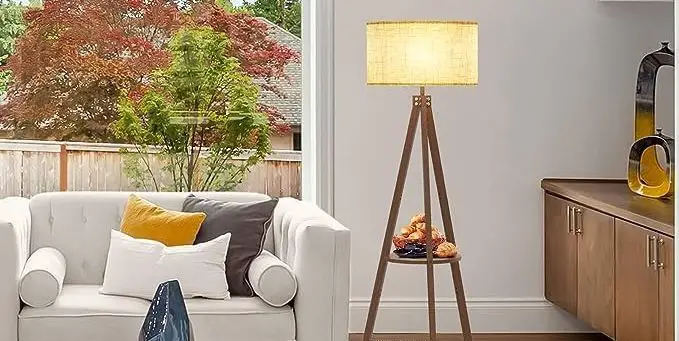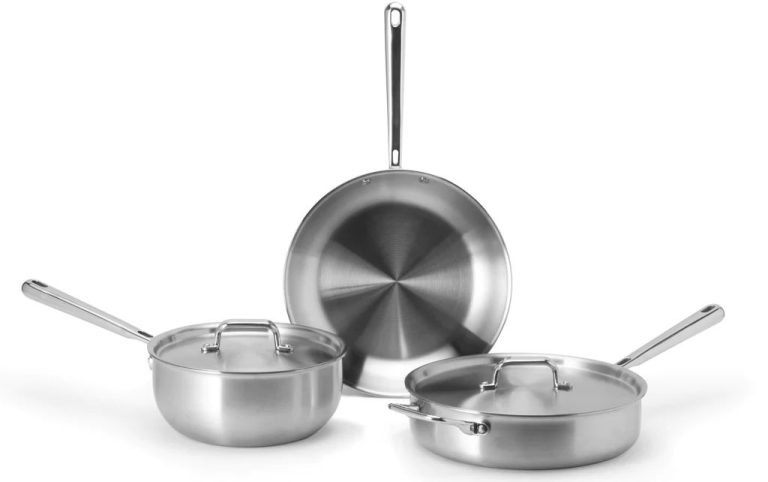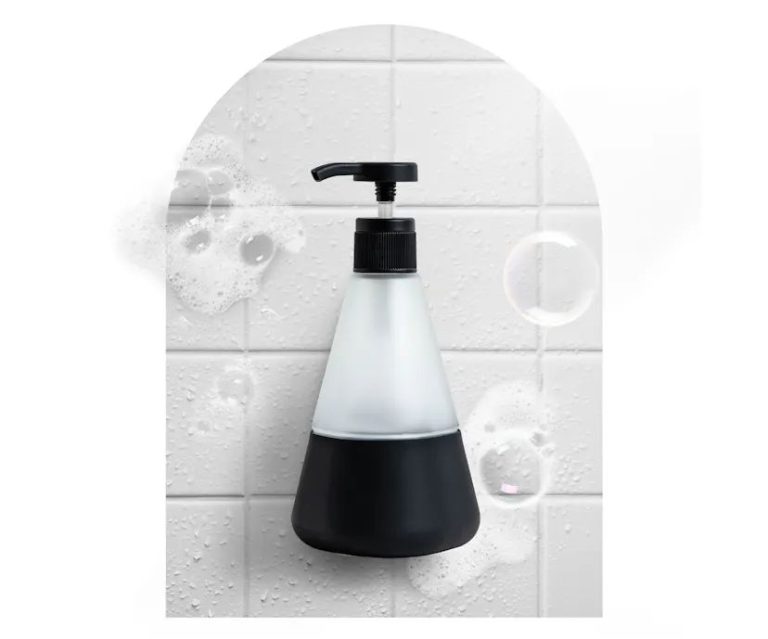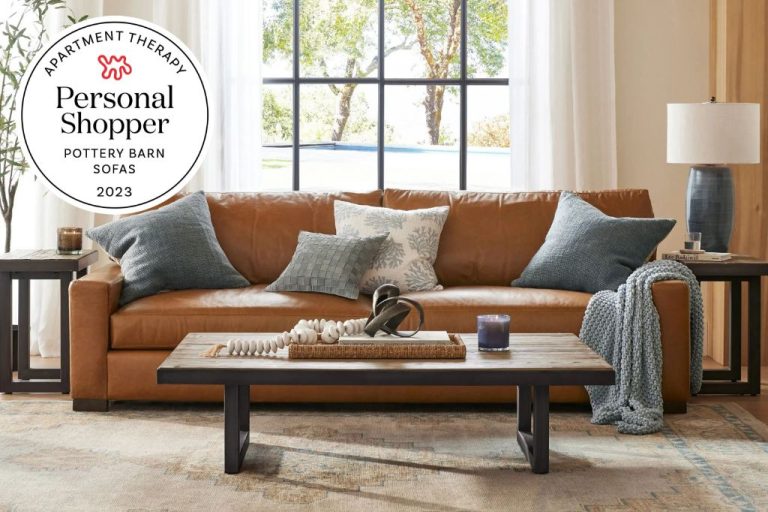Are Led Floor Lamps Worth It?
LED (light-emitting diode) floor lamps are lighting fixtures that provide illumination from the floor. As the name suggests, these lamps utilize LED light bulbs or modules as the light source instead of traditional incandescent or fluorescent bulbs. The main defining characteristic of LED floor lamps is that they utilize energy-efficient and long-lasting LED lighting technology to provide ambient or task lighting.
Compared to other lamp types like table lamps or pendant lights, floor lamps have the benefit of taking up minimal tabletop or shelf space. Their height and adjustable heads allow directing the light where needed, while the base keeps the fixture sturdy and freestanding. Modern LED floor lamps combine the versatile, space-saving form of traditional floor lamps with advanced solid-state lighting for maximal efficiency.
Pros of LED Floor Lamps
One of the biggest pros of LED floor lamps is that they are extremely energy efficient. LED bulbs use up to 90% less energy than incandescent bulbs and last 25 times longer (source). This energy efficiency saves money on electricity bills over time.
The long lifespan of LED bulbs, which can last up to 50,000 hours, is another major pro (source). With average use of 3 hours per day, an LED bulb could last over 45 years before needing replacement. This avoids the hassle and cost of frequently replacing bulbs.
LED floor lamps provide bright, vibrant light comparable to incandescent bulbs, while avoiding the buzzing noise associated with fluorescent lighting. The light appears clear and natural.
Many LED floor lamps are flexible and adjustable, with movable joints and heads to direct light where needed. Some models have dimmer switches or color temperature adjustment to customize the atmosphere.
Finally, LED floor lamps come in a wide variety of sizes, shapes, materials, and styles. From minimalist to industrial to mid-century modern, there are options to suit any home decor.
Cons of LED Floor Lamps
While LED floor lamps offer many benefits, they do have some potential drawbacks to consider. One of the main cons is the higher upfront cost compared to traditional incandescent or fluorescent floor lamps. LED lamps can cost 3-5 times more initially, though the long-term energy savings often make up for the higher starting price over time. Still, the sticker shock may deter some buyers.
Another potential issue with LED floor lamps is that the electronics are sensitive to overheating. If the lamp isn’t designed properly with adequate heat sinks, the LEDs and driver components can overheat and fail prematurely. Quality design is key for longevity, so check for products made by reputable manufacturers. Proper airflow around the electronics is also important.
Some users report buzzing or humming noises coming from LED lamps, which can be annoying in a quiet room. This is often from poor power supplies or components. Higher quality LED lamps generally won’t have audible noise issues.
While the light quality keeps improving, earlier generations of LED lamps were known for having a harsh, cold, blue-ish light. Make sure to look for warmer color temperatures (2700-3000K range) if this is a concern.
Cost Comparison
When looking at the costs of LED vs. incandescent or halogen floor lamps, LEDs are generally more expensive upfront, but save money over time. According to sources, the average cost of an LED floor lamp ranges from $50-$150, while an equivalent incandescent or halogen lamp costs $20-$75 (Source: URL 1).
However, LED lamps last much longer – typically over 20,000 hours compared to 1,000-2,000 hours for incandescent bulbs. This means LED bulbs don’t need to be replaced nearly as often. Additionally, LED bulbs use a fraction of the energy compared to incandescents – about 75% less. When you calculate lifetime costs, LED floor lamps end up being significantly cheaper in the long run. One source estimates the 10-year cost of an LED bulb at just $18, compared to $90 for an incandescent (Source: URL 2).
So while LED floor lamps have higher upfront costs, their energy efficiency and long lifespan make them a better value over time. The cost savings from avoiding frequent bulb changes and lower energy bills offset the initial price difference.
Light Quality
One of the key benefits of LED floor lamps is their ability to produce high quality light with excellent color rendering. LEDs have a color temperature that ranges from warm white to daylight, allowing you to choose the right temperature for your needs. Warm white LEDs around 2700-3000K produce a soft, cozy glow that’s ideal for living spaces, while daylight LEDs around 5000-6500K give off a bright, energizing light perfect for tasks like reading or working.
In terms of brightness, LED floor lamps are extremely powerful, producing over 1,000 lumens on average. This is significantly brighter than incandescent or halogen lamps. With their wide beam angles, LED floor lamps distribute light evenly across large areas with minimal shadows or dark spots. The Verilux SmartLight LED Floor Lamp is designed to provide full room illumination.
By combining adjustable color temperature, high lumen output, and wide coverage, LED floor lamps allow you to customize a bright, high quality light for your exact needs. This makes them superior to older lighting technologies in terms of light quality.
Features
One of the biggest benefits of LED floor lamps is their advanced features and functionality. Many modern LED floor lamps come with dimming capabilities, allowing you to adjust the brightness to your exact needs. This is especially useful if you want to create different lighting ambiances in a room.
For example, the Verilux SmartLight LED floor lamp has an easy touch dimming feature with low, medium and high brightness settings. You can go from a soft glow for relaxing to a brighter light for reading or tasks.
In addition, some LED floor lamps like the Verilux models offer multiple color temperature options. This lets you shift from a warm white to daylight hue depending on your activity and preference. The ability to customize both brightness and color makes LED floor lamps very versatile.
Many new LED floor lamps also have smart connectivity and can sync with home automation systems. You may be able to control the lamp through a smartphone app, voice assistant or smart home platform. This allows you to turn the light on/off and change settings remotely.
The advanced functionality of dimming, color tuning and smart controls makes LED floor lamps much more customizable and convenient compared to traditional incandescent models.
Style and Design
LED floor lamps come in a variety of styles to match different home decor aesthetics. Some popular design styles for LED floor lamps include:

Modern
Modern LED floor lamps feature sleek, contemporary designs with metallic finishes and minimalist details. They often have adjustable arms and heads to direct light. Popular modern styles include arc lamps or curved lamps with circular shades (Amazon).
Traditional
Traditional LED floor lamps evoke classic designs like Tiffany-style lamps with stained glass shades or elegant torchiere lamps. These lamps have traditional materials like metal, glass, or fabric shades with classic decorative accents.
Industrial
Industrial LED floor lamps feature exposed bulbs, raw metallic finishes like brass or black iron, and Edison-style filament bulbs. They have an unfinished, mechanical aesthetic perfect for industrial decor.
Minimalist
Minimalist LED floor lamps have simple, stripped-down designs focused on clean lines and basic geometric shapes. They often feature solid-colored fabric shades or bare bulbs for an understated look. Their uncomplicated style complements modern and contemporary spaces (Brightech).
Recommended Brands
When shopping for LED floor lamps, sticking with top brands known for quality and reliability is a safe bet. Here are some of the most popular and best-reviewed LED floor lamp brands on the market:
Brightech (https://brightech.com/collections/floor-lamps): Brightech specializes in contemporary and modern LED lighting. Their floor lamps feature lightweight bases, adjustable arms and heads, and long-lasting LED bulbs. Popular models include the Sky, Leaf, and Luna floor lamps.
Lamp Depot (https://www.houzz.com/products/floor-lamps/type_bulb–LED): With a 4.7-star rating based on over 1,000 reviews, Lamp Depot on Houzz offers a wide selection of LED floor lamps in various styles. Many boast features like touch-control dimming, built-in USB ports, and energy-efficient bulbs.
Northeast Lantern (https://www.northeastlantern.com/led-floor-lamps): This company specializes in classic yet contemporary LED floor lamps using quality materials like solid steel, marble, and linen lampshades. Their products are hand-assembled in the USA.
TaoTronics (https://www.amazon.com/TaoTronics-Adjustable-Brightness-Bedrooms-TT-FL001/dp/B07Q6RV9HM): Known for affordably priced but well-made electronics and gadgets, TaoTronics offers LED floor lamps with features like touch-control dimming, built-in timers, and brightness memory. Most cost under $100.
These reputable brands offer quality construction, long-lasting LED bulbs, and excellent lighting features in their floor lamp collections.
Use Cases
LED floor lamps are versatile and can be used effectively in many areas of the home. Here are some of the top use cases where LED floor lamps excel:
Living Room – Placing an LED floor lamp behind the couch or next to an accent chair provides excellent task lighting for reading or ambient lighting. The long reach of floor lamps makes them ideal for large living room spaces (Source 1, Source 2).
Bedroom – An LED floor lamp next to the bed provides soft lighting for late night reading. Floor lamps can also go on both sides of the bed as matching nightstand lamps (Source 1).
Home Office – Swivel LED floor lamps provide directed task lighting for home office workspaces. Their height makes them perfect for illuminating desk surfaces (Source 2).
Entryway – An LED floor lamp in an entryway or mudroom provides welcoming illumination when coming home at night. It’s a stylish alternative to an overhead fixture (Source 1).
Conclusion
In summary, LED floor lamps have several pros compared to traditional incandescent and halogen lamps. They are much more energy efficient, using up to 90% less power. This saves money on electricity bills in the long run. LEDs also last much longer, with lifespan ratings over 50,000 hours compared to 1,000-2,000 hours for incandescent bulbs. This reduces the hassle and cost of frequently replacing burnt out bulbs.
LED floor lamps provide bright, natural looking light similar to daylight. Their light output is fully dimmable as well. Newer LED lamps offer features like color tuning to customize the shade of white light. Their technology enables innovative modern designs from slim and minimalist to unique sculptural shapes.
The main limitations of LED floor lamps currently are the higher upfront costs. Prices have come down over the years but still exceed incandescent lamps. However, given the electricity savings and long lifespan, LEDs can pay for themselves over time. Cooler color temperatures around 5000K may seem harsh at first for some users. Quality and reliability can vary among budget LED lamp brands too.
Overall, the numerous benefits of LED lighting make it a smart choice over traditional lighting for most homes. The energy efficiency, longevity, light quality, and flexibility of LED floor lamps make them a worthwhile long-term investment for ambient and task lighting needs. Just be sure to look for reputable brands, and choose lamps with the appropriate lumen brightness, light temperature, and features for your needs.





